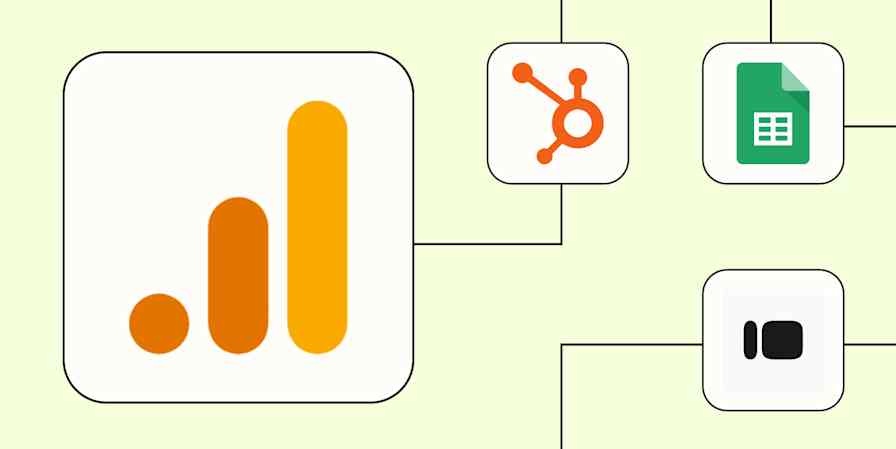f"Data is the new oil." It's a played-out expression, but it underlines a significant truth of our time—data, like oil, is fueling growth and innovation. And it's all thanks to its incredible insights into human behavior.
And again, like oil, not all data comes out of the ground with the same properties. Some data is structured, neatly categorized, and easily processed. Other data is unstructured, messy, and requires a bit more effort to wrangle into usable insights.
So, what is the difference between structured and unstructured data? Here, I'll walk you through key differences and use cases and share some examples so you can understand how to use both to power your business.
Structured data vs. unstructured data at a glance
| Structured data | Unstructured data |
|---|---|---|
What it is | Organized data with a set format (like tables or databases) | Free-form data with no set format (like text, images, and video) |
Why it's used | For quantitative analysis, hard numbers, and measurable facts | For qualitative insights, understanding context, and subtleties |
How it's used | With standard queries, analytics tools, and by AI for predictions | With advanced tools (like AI, ML, NLP) for sentiment or image analysis |
When to use it | For CRM data, financial transactions, inventory, and analytics | For email content, social media, customer feedback, and multimedia |
Who uses it | Financial analysts, marketers, database admins, and business intelligence (BI) teams | Market researchers, data scientists, customer service teams, and AI developers |
Table of contents:
What is structured data?
Structured data is data that's organized and follows a specific blueprint or format, fits neatly into the rows and columns of a database, and is easy to analyze.
Structured data isn't limited to numerical values: it can encompass anything that can be systematically categorized and stored. Whether it's the names of individuals, categories of products, or song titles, as long as the information is organized within a framework, it's structured data.
How is structured data used?
Structured data is particularly handy when you need clear, quantitative insights. For example, your online banking system uses it to quickly pull up your transaction history, and a customer relationship management (CRM) system can filter contacts based on specific criteria because the data is neatly organized.
AI and machine learning also get on well with structured data. Because it's so organized, AI can handle massive volumes of it quickly, which helps spot patterns that might otherwise be missed.
In finance, for instance, AI analyzes structured data from financial databases to identify subtle trends, assess credit risks with greater accuracy, or detect anomalies that might indicate fraud.
Retail and eCommerce operations might use AI with their structured CRM and sales data for advanced predictive modeling of customer buying habits, to optimize supply chains with better demand forecasting, and to personalize the customer experience.
Types of structured data
Structured data follows clear value guidelines and consistent formats, which is what makes it straightforward to categorize and use. While that might bring numbers to mind, a lot of text-based information is also organized this way, including:
Dates: This covers things like publication dates for articles, event times, or timestamps in logs.
Descriptive text: Think names (of people, products, companies), categories, or titles of works.
Metadata: Metadata is essentially data about data, and it's usually very structured. Common examples are the neat fields in email headers (sender, recipient, subject), standard file properties (like creation date or author), or specific data tags set up to organize content.
Coded or categorized text: Short, predefined text entries often fit here. This could be status indicators ("active," "shipped," "pending") or consistent responses from a set list.
Structured data: Benefits and challenges
While structured data has its advantages, it does come with its share of caveats.
Benefits | Challenges |
|---|---|
Easy to find: Allows for speedy and efficient access, filtering, and analysis; handy for quick information retrieval. | Inflexible: Demands conformity; if data doesn't fit into its predefined categories, it's generally a no-go. |
Standardized: Follows a uniform format so it can be easily understood and used across different systems and applications. | Exhausting setup: Analysis might be easier down the line, but the initial task of categorizing, tagging, and arranging data can be very time-intensive. |
Good for analysis: With a design for number crunching, it's well-suited for statistical analysis. | Robotic: Capturing the nuances of human language, images, or other complex information isn't its strong suit. |
Works well with machine learning: Its consistency makes it a good fit for many algorithms and machine learning models. | Tough to design and maintain: Building and managing databases for structured data often requires specialized knowledge and skills. |
What is unstructured data?
Unstructured data is data that doesn't follow a specific blueprint or format. It's the leader of the data world, accounting for the lion's share of the information created today. It lives life on its terms, scattered across different formats like images, videos, text, and audio. If structured data is the sender, recipient, or subject line of an email, unstructured data is the content, attachments, or images that might be included.
How is unstructured data used?
Unstructured data is a gold mine for qualitative insights. The chaotic variety allows for capturing the complexity and subtleties of human language, emotions, behaviors—you name it.
Because this type of data doesn't come in a neat, predefined format, making sense of it—and sometimes extracting the data, a usable structure, or key information from it—typically requires more specialized tools. This is where AI and ML often play a pivotal role. For example:
Customer service: Modern AI can analyze unstructured text from customer emails, chat logs, and call transcripts with impressive nuance. This is used to power more conversational and helpful chatbots, accurately identify complex customer issues for faster resolution, or even draft suggested replies for human agents.
Market research: AI algorithms sift through massive volumes of public unstructured content—like social media discussions, news articles, product reviews, and forum posts—to detect emerging trends, understand public sentiment in detail, and gather timely competitive intelligence.
Advanced content understanding: Natural language processing (NLP) can comprehend, summarize, translate, and generate human-like text based on diverse, unstructured sources. Similarly, AI-powered image, video, and audio analysis can identify objects, scenes, activities, and even infer context or sentiment with increasing accuracy.
Types of unstructured data
So unstructured data is less definite than structured data, and while it's often just called "unstructured," it typically has its own kind of internal organization—just not in a standardized, predictable format. Here are some you'll encounter:
Social media posts: This is the freeform text, images, or videos you find in status updates, tweets, or shared stories.
Emails: Here we're talking about the main body content of an email—the actual text, any embedded images, or attachments—which can be pretty much anything.
Photo and video files: This is the raw visual or audiovisual content itself, which doesn't fit neatly into rows and columns.
Websites: The core content on web pages, like the text of articles, blog posts, product descriptions, and user comments.
Audio recordings: The actual sound content in an audio file, whether it's a podcast episode, a voice memo, music, or a recorded meeting.
Unstructured data: benefits and challenges
As you might guess, the tumultuous nature of unstructured data comes with its own unique set of pros and cons.
Benefits | Challenges |
|---|---|
Versatile: Comes in many forms, offering a broad, diverse view of information | Takes time to prep: Unlike structured data, it isn't always immediately ready for quick querying or retrieval |
Vast: Makes up most of the data generated today, representing a large pool of potential insights | Hard to analyze and standardize: Often needs specialized tech, like AI and machine learning algorithms, to make sense of it |
Qualitatively insightful: Good at capturing actual human actions and feelings, providing insights into user behavior, sentiments, and more | Takes up space: All that information needs a place to live and can gobble up significant storage resources |
When to use structured vs. unstructured data
Use structured data when you need to... | Use unstructured data when you need to... |
|---|---|
Get precise, quantitative answers | Understand the "why" or context behind trends |
Organize information into neat tables and categories | Explore broad themes from varied sources |
Track specific, known metrics consistently | Analyze sentiment, opinions, and nuances |
Perform standard calculations and generate reports | Work with varied formats like text, audio, and video |
Deciding whether structured or unstructured data is the right fit usually comes down to your specific goals and the type of information at hand. It's less about one being superior and more about using the appropriate tool for the task.
You'll generally find that structured data is the way to go when you need precise, quantitative answers and you're working with information that fits neatly into predefined categories—the kind of data that can be cleanly organized in tables. This approach is ideal if you're performing straightforward calculations, tracking known metrics consistently, or generating regular reports based on those parameters. For example, if you want to analyze your website's daily visitor counts, page views, and bounce rates from your analytics platform, structured data is your friend because these are clearly defined metrics, recorded consistently.
On the other hand, unstructured data is typically more suitable when you're trying to understand the "why" behind something, explore themes, or get a feel for sentiment and context from varied sources like text, audio, or video. You'd turn to it when the information is diverse, doesn't have a predictable format, and your aim is to analyze it for deeper, often qualitative, insights rather than just straightforward numerical outputs. For instance, if you're looking to understand public reaction to a new product by sifting through social media comments, news articles, and video reviews, you'd be working with unstructured data and the specialized tools designed to handle it.
These general scenarios should give you a starting point. To see how this distinction plays out with common types of information, the next section looks at some specific examples.
Examples of structured vs. unstructured data
So that's a lot of information. To help break it down a little bit, here are a few real-life examples.
Social media

Structured data
Post date and time: Every time a post is made, Instagram systematically logs the date and time.
Number of comments and likes: Quantifiable metrics that show engagement.
Unstructured data
Image content: The actual image doesn't fit into neat rows and columns.
Caption: The free-form text accompanying the image, brimming with personality, hashtags, and emojis.

Structured data
Metadata: This includes the sender, recipient, date, and subject line. Think of these as the "envelope details" of your email.
Unstructured data
Email content: The main body of the email, be it text, images, or attachments, is as varied and unique as the sender's intent.
Podcasts

Structured data
Duration: The exact length of the episode in hours, minutes, and seconds.
Release date: The date the episode was published.
Unstructured data
Audio content: The actual conversation, dialogue, and sound effects present in the episode.
Episode description: While it may offer a structured overview of the content, the way it's written, the anecdotes shared, or the jokes made are free-flowing and unstructured.
Semi-structured data vs. structured and unstructured data
If structured data is neatly organized and unstructured data is more of a free-for-all, semi-structured data is somewhere in between. It doesn't conform to the formal structure of traditional databases (no fixed schema, in other words), but it's not completely raw like unstructured data, either.
Semi-structured data often shows up in formats like JSON (JavaScript Object Notation) and XML (eXtensible Markup Language). These are standard for things like web APIs, configuration files, and data exchange between different software systems. Data within NoSQL databases, or even structured-looking data like email (which has clear fields like "To," "From," "Subject," but a very free-form body), can also be considered semi-structured.
Semi-structured data is particularly useful when you need more flexibility than rigid database schemas offer, especially if the data's structure might change over time or isn't consistent across all items. It's commonly found in content that has some inherent hierarchy or identifiable parts, but where not every item will have the exact same attributes or layout, especially when automating the flow of this data between your apps.
Structured and unstructured data: The dynamic duo for business success
If there's just one takeaway here, it's that data is basically a mullet: structured in the front, unstructured in the back. Yes, structured data is invaluable. And, of course, unstructured data, with its complex layers of qualitative insights, is equally compelling. But when you put them together, you get a clean-cut number-crunchin' analyst who's also got their finger on the pulse of cultural trends and human nuance, capable of making decisions based on hard numbers and the underlying motivations and trends that inform those numbers. Maybe this is why mullets are back in?
So as you channel your inner data wrangler, remember, it's not merely about taming the wild, unstructured data or fitting everything into neat, structured rows and columns. It's about harnessing the power of both. Embrace this dynamic duo to inform your marketing strategies and propel your business forward.
And when it comes to managing all this data, automating how you capture, sort, and use it across your apps can make a huge difference. Zapier provides tools tailored for both types of data.
For your structured data, you can use automated workflows (Zaps) to move neatly organized information between your apps—like updating lead profiles in a CRM or adding new rows to a spreadsheet. And when you need a central repository built from the ground up for automation, there's Zapier Tables.
For the complexities of unstructured data, AI is key. With Zapier Agents, you can build custom AI bots that sift through and make sense of messy information. For example, an Agent can monitor incoming emails, pull out key details, and summarize them, turning unstructured text into actionable insights.
Structured and unstructured data FAQ
Got more questions? No problem, I've got answers.
How is structured vs. unstructured data used for deep learning?
Deep learning—a subset of machine learning—employs neural networks with many layers to analyze various forms of data. Structured data is typically used for tasks that require clear numerical or categorical inputs and targets, such as predicting house prices or classifying emails. Unstructured data, on the other hand, is used in areas like natural language processing or image recognition, where the data is complex and not readily quantifiable.
Is email structured or unstructured data?
Emails can be both. The metadata (sender, recipient, date, subject) is structured, but the body of the email (text, attachments, images, etc.) is unstructured data.
Is CSV unstructured data?
Actually, CSV (Comma-Separated Values) files are a classic example of structured data. Even though they're plain text files, they organize data into a tabular format: each line typically represents a record (like a row in a spreadsheet), and commas separate the fields (acting as columns). Often, the first line serves as a header row, defining those columns. So, despite their appearance, CSVs have a clear, consistent structure that aligns well with structured data principles.
Related reading:
This article was originally published in September 2023. The most recent update was in June 2025.










